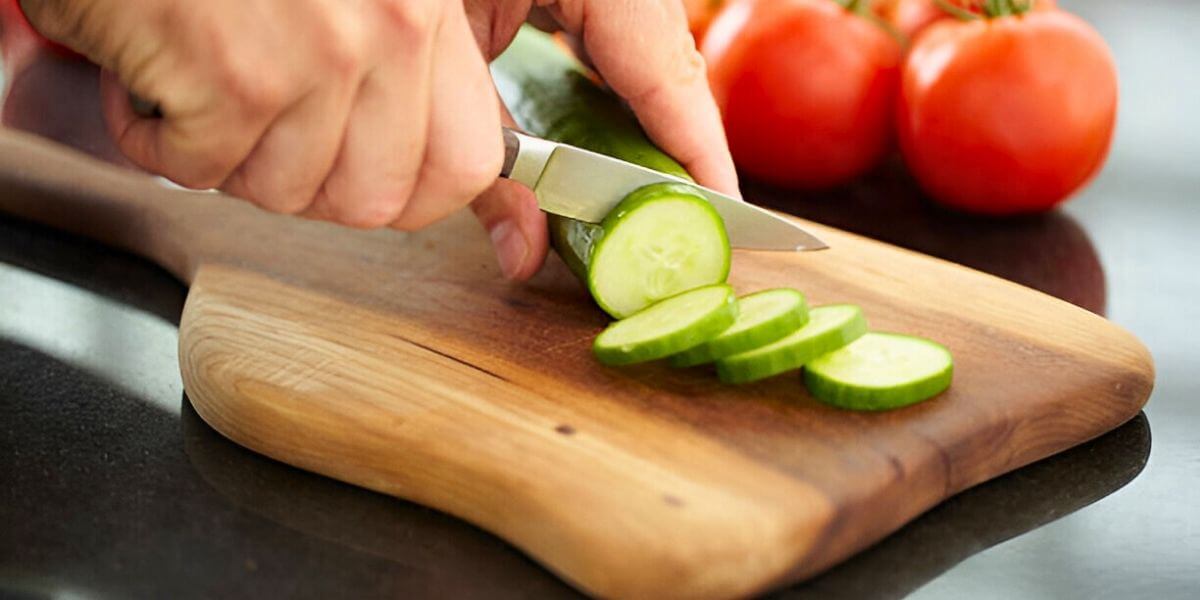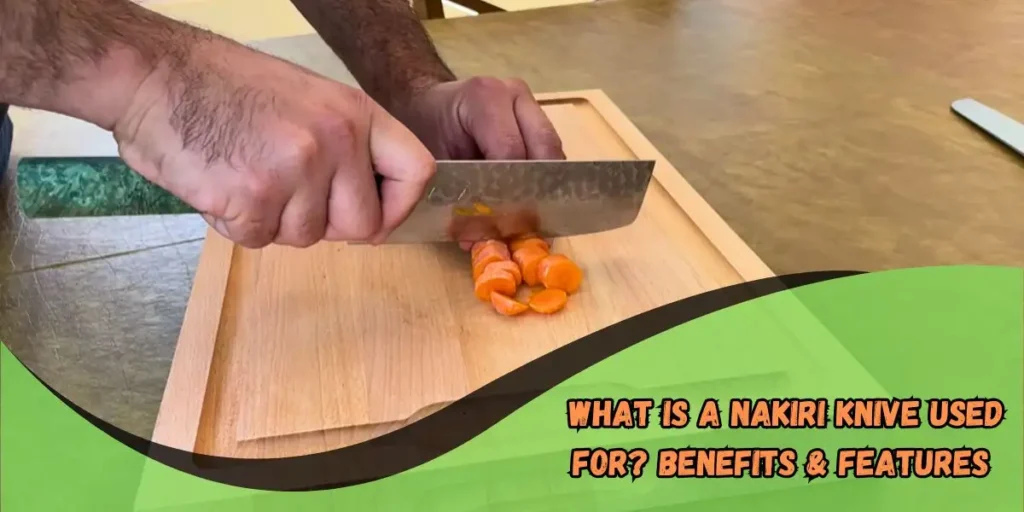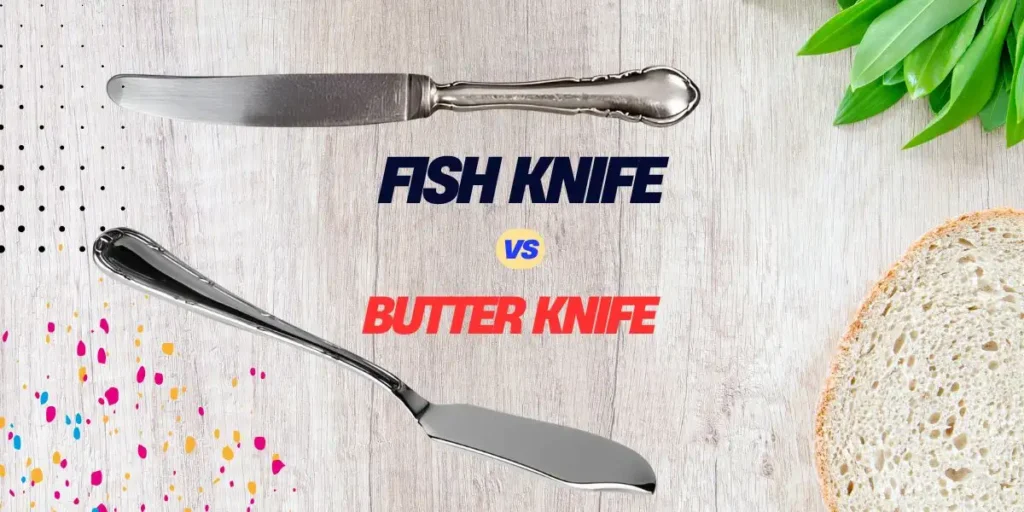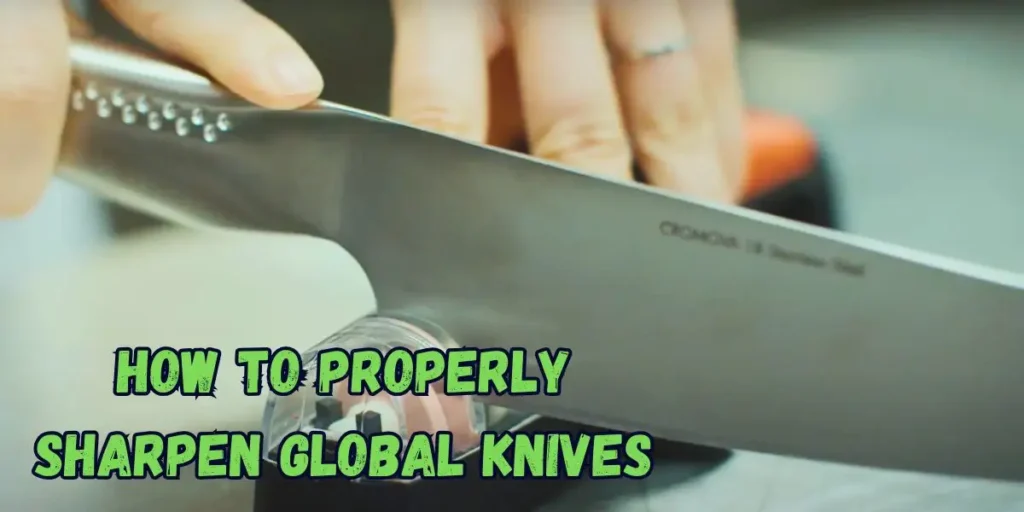What is a Paring Knife Used for and Why You Need One
A paring knife is used for peeling and trimming fruits and vegetables. It is ideal for precise cutting tasks.

A paring knife is a necessary tool in any kitchen. This small, versatile knife excels at tasks requiring precision. Its sharp, pointed blade makes peeling fruits and vegetables easy. Chefs and home cooks alike rely on it for intricate work.
Paring knives are perfect for removing seeds, deveining shrimp, and creating garnishes. Their compact size allows for excellent control and maneuverability. Choosing a quality paring knive enhances your cooking experience.
Always keep it sharp for optimal performance. This essential tool is a must-have for anyone serious about cooking.
Introduction To Paring Knives
A paring knive is a small yet versatile tool essential for any kitchen. Its primary purpose is precision tasks.
The knife is known for its compact design. It excels in peeling, trimming, and slicing small fruits and vegetables.
Compact And Versatile
The paring knife is compact, usually 3 to 4 inches. This small size makes it easy to handle.
Its versatility allows it to perform various tasks, such as core an apple or devein a shrimp. It is also perfect for intricate cuts.
Blade Design And Material
The blade of a paring knife is crucial. It is usually made of stainless steel or carbon steel. Stainless steel is durable and resistant to rust. Carbon steel is sharper but needs more care.
Blade designs vary, including straight, spear-point, and bird’s beak. Each design serves a different purpose. Straight blades are ideal for peeling and slicing. Spear-point blades are great for detailed work. Bird’s beak blades excel in peeling round fruits and veggies.
Peeling Fruits And Vegetables
Peeling fruits and vegetables is a shared kitchen task. A paring knife is perfect for this job. Its small size offers control and precision, making it easy to remove skins smoothly.
Precision Peeling
The paring knife excels in precision peeling. Its sharp blade allows for close, controlled cuts. This is helpful for delicate fruits like peaches or tomatoes. The small blade prevents waste. It removes only the skin, leaving the fruit intact.

Precision is critical when peeling vegetables, too. A paring knife can handle thin-skinned veggies like carrots, potatoes, or cucumbers. The knife’s size fits well in your hand, making peeling comfortable and safe.
Common Uses
- Fruits: Apples, peaches, tomatoes, and kiwis.
- Vegetables: Carrots, potatoes, cucumbers, and beets.
Paring knives can create decorative garnishes in addition to peeling. You can make thin, even slices for salads or fruit platters, adding a touch of elegance to your dishes.
Here’s a quick comparison of paring knive uses:
| Task | Fruits | Vegetables |
| Peeling | Apples, peaches, kiwis | Carrots, potatoes, beets |
| Slicing | Strawberries, bananas | Cucumbers, radishes |
| Decorating | Oranges, lemons | Carrots, zucchinis |
Trimming And Removing Seeds
Paring knives are essential in any kitchen with their small, sharp blades. They excel in tasks demanding precision and control, such as trimming and removing seeds from fruits and vegetables. With a paring knive, even the trickiest tasks become easy and efficient, boosting confidence in the kitchen.
Core And Seed Removal
Removing the core and seeds from fruits can be a delicate job. A paring knive, with its small size and sharp blade, is ideal.
- Apples: Cut the apple in half. Use the knife to carve out the core.
- Bell Peppers: Slice off the top. Cut around the seeds and remove the core.
- Tomatoes: Make a small incision around the stem. Twist the knife to remove the core.
When followed, these steps not only ensure quick seed removal but also keep your fingers safe from cuts. The safety feature of paring knives provides a sense of security, making your kitchen experience more enjoyable and worry-free.
Trimming Techniques
Trimming fruits and vegetables is another important use for a paring knive.
Here are some standard techniques:
- Peeling: Hold the fruit and gently slide the knife under the skin.
- Hulling Strawberries: Insert the knife at an angle. Twist to remove the stem.
- Shaping: Use the knife to create embellishing shapes in fruits.
These techniques help you prepare fruits and vegetables for cooking or serving and add a professional touch to your dishes. Mastering these techniques with a paring knive can make you feel adept and skilled in the kitchen.
| Fruit/Vegetable | Trimming Technique |
| Apple | Peeling and coring |
| Strawberry | Hulling |
| Carrot | Peeling and shaping |
Using a paring knive to trim and remove seeds makes these tasks quick and easy. It is a versatile tool that is essential in any kitchen.
Slicing And Dicing Small Ingredients
A paring knive is a must-have in every kitchen. It excels at slicing and dicing small ingredients with precision. This small, sharp, easy-to-handle knife is ideal for tasks requiring attention to detail. Let’s explore its specific uses.
Fine Dicing
Fine dicing is essential for recipes that need uniformity. A paring knife helps you achieve this easily. With a sharp blade, you can create small, even cubes. This is great for ingredients like garlic, shallots, and chilies.
Follow these steps for fine dicing:
- Peel the ingredients if needed.
Cut it into thin slices. - Stack the slices and cut them into thin strips.
- Turn the strips and dice them into small cubes.
Uniform Slices
Uniform slices are crucial for consistent cooking. A paring knife helps you achieve this. It’s perfect for slicing fruits and vegetables like strawberries, kiwis, and radishes.
Steps for uniform slices:
- Hold the ingredients firmly.
- Use the knife to make even, thin slices.
- Repeat until the ingredient is fully sliced.
Here’s a table to summarize the main points:
| Task | Ingredients | Steps |
| Fine Dicing | Garlic, Shallots, Chilies |
Dice |
| Uniform Slices | Strawberries, Kiwis, Radishes | Hold Firmly, Slice Evenly, Repeat |
Segmenting Citrus
Segmenting citrus is a useful skill for any home cook. It involves removing the juicy segments from their bitter pith and peel. With its small size and sharp blade, a paring knife is the perfect tool for this task.
Cutting Citrus Segments
To begin with, cut off the top and bottom of the fruit. This will create flat surfaces, making it easier to handle. Next, place the fruit on one of the flat surfaces and carefully cut away the peel and pith. With your paring knive, follow the natural curve of the fruit.

Hold the fruit in your hand once the peel and pith are removed. Use the paring knife to cut along the membranes that separate each segment. Be gentle to avoid breaking the delicate segments. Continue until all segments are free.
Avoiding Pith
The pith is the white, spongy layer between the peel and the fruit. It tastes bitter and can ruin the flavor of your dish. To avoid it, cut deeply enough to remove the peel and the pith in one go.
A pairing allows for precision, ensuring that cuts are clean and close to the membrane. The goal is to keep as much juicy fruit as possible while discarding the bitter pith.
| Step | Description |
| 1 | Cut off the top and bottom of the fruit. |
| 2 | Remove the peel and pith with a paring knife. |
| 3 | Cut along the membranes to free each segment. |
Segmenting citrus with a paring knife is simple and quick. It ensures that you get the best parts of the fruit without the pith’s bipith’sss.
Deveining Shrimp
Deveining shrimp can seem tricky, but a paring knife makes it easy. This small knife is perfect for delicate tasks. It helps keep the shrimp clean and tasty, and you can remove the vein with a few quick moves.
Efficient Deveining
The paring knife is small and sharp. It fits well in your hand and helps you cut precisely. To devein shrimp, start by slicing the shell. Then, use the knife tip to make a shallow cut along the back. Finally, use the knife tip to lift the vein out. It’s quicIt’sd simple.
| Steps | Action |
| 1 | Hold the shrimp firmly. |
| 2 | Make a shallow cut along the back. |
| 3 | Use the knife tip to lift the vein out. |
Maintaining Shrimp Quality
Using a paring knife helps maintain shrimp quality. The small blade causes less damage, keeping the shrimp intact and preserving their flavor. A paring knife is gentle on the shrimp and prevents tearing or squishing, making your shrimp look and taste better.
- Small blade causes less damage.
- It kee-shrimp inhcontactsintact.
- Ensures fresh flavor. It prevents tearing or squishing.
Creating Garnishes
A paring knife is perfect for creating stunning garnishes. Its small, sharp blade allows for precision cuts. Garnishes enhance the appeal of any dish and add a touch of elegance and professionalism. Let’s show Let’ sife, which helps make beautiful garnishes.
Decorative Cuts
Using a paring knife, you can achieve various decorative cuts. These cuts transform ordinary fruits and vegetables into artistic pieces.
Here are some popular decorative cuts:
- Julienne: Thin, matchstick-sized strips.
- Chiffonade: Finely sliced leafy greens.
- Rondelle: Circular slices from cylindrical vegetables.
- Tourner: Football-shaped cuts for root vegetables.
Each decorative cut serves a unique purpose. They can turn a simple salad into a visual delight. A paring knife’s skknife’sasknife’ssion makes these cuts possible.
Enhancing Presentation
Presentation plays a crucial role in how food is perceived. A well-presented dish can elevate the dining experience. Using a paring knife, you can create intricate designs.
Here are a few ways to enhance presentation:
- Carving fruits into beautiful shapes.
- Molding vegetables into flowers.
- Creating intricate patterns on cheese blocks.
A simple plate of fruits can become a work of art. The paring knife’s vvkknife’sivknife’sityr a range of creative possibilities.
Chefs and home cooks alike use these techniques. They add a personal touch to their dishes. A pairing knife is an essential tool for anyone who values presentation.
In summary, a paring knife is indispensable for creating garnishes. Its precision and versatility make it a favorite among culinary enthusiasts.
Maintaining Your Paring Knife
Proper maintenance of your paring knives ensures their longevity and performance. A well-maintained knife makes food prep more accessible and safer. Here are some tips to keep your paring knife in top condition.
Sharpening Tips
Keeping your paring knife sharp is crucial. A dull knife can be dangerous. Follow these tips to sharpen your knife effectively:
- Use a whetstone or a honing rod regularly.
- Hold the knife at a 20-degree angle while sharpening.
- Sharpen each side evenly to maintain balance.
- Test sharpness by slicing through a sheet of paper.
Regular sharpening ensures your knife stays effective and safe to use.
Proper Storage
Storing your paring knife correctly prevents damage and accidents. Consider these storage options:
| Storage Option | Benefits |
| Knife Block | It protects the blade and is easy to access. |
| Magnetic Strip | It saves counter space and keeps knives visible. |
| Drawer Organizer | Keeps knives organized and safe from damage. |
Never store your paring knife loosely in a drawer. This can damage the blade and pose a safety risk. Choose a storage method that suits your kitchen setup.
Frequently Asked Questions
A paring knife is primarily used for intricate kitchen tasks like peeling, trimming, and cutting small fruits and vegetables with precision.
Yes, a paring knife is ideal for peeling fruits and vegetables due to its sharp blade and compact size, offering control and accuracy.
A paring knife can handle small meat tasks, like trimming fat or slicing delicate portions, but it's not suitable for heavy-duty meat cutting.
A paring knife is smaller, designed for detailed tasks like peeling and slicing, while a chef’s knife handles larger chopping and cutting needs.
Yes, its sharp, pointed blade makes it perfect for creating decorative cuts or intricate carvings on fruits, vegetables, and garnishes.
Regularly hone the blade with a sharpening steel and store it properly to maintain sharpness and ensure its longevity for precise tasks.
A paring knife is indispensable for handling small, precise tasks efficiently, making it a versatile tool for both novice and professional cooks.
Conclusion
A paring knife is an essential tool in any kitchen. It excels at precise tasks like peeling, slicing, and trimming. Versatile and easy to handle, it makes food preparation more efficient. Investing in a good paring knife can significantly enhance your culinary experience, making everyday cooking tasks more straightforward and more enjoyable.
Related Posts
-
 23 Feb 2025 KnifeWhat Is a Slicing Knife Used For? Discover How It Makes Cooking Easy!
23 Feb 2025 KnifeWhat Is a Slicing Knife Used For? Discover How It Makes Cooking Easy! -
 16 Feb 2025 KnifeWhat knives does Gordon Ramsay use? Check out his premium knives
16 Feb 2025 KnifeWhat knives does Gordon Ramsay use? Check out his premium knives -
 15 Feb 2025 KnifeWhat Knife Do Navy Seals Use? SEAL's Standard Issue 2025
15 Feb 2025 KnifeWhat Knife Do Navy Seals Use? SEAL's Standard Issue 2025 -
 08 Feb 2025 KnifeWhat Knife Does John Wick Use? Learn About His Deadly Blade
08 Feb 2025 KnifeWhat Knife Does John Wick Use? Learn About His Deadly Blade -
 30 Jan 2025 KnifeWhat is a Nakiri Knives Used For? Benefits & Features Explained
30 Jan 2025 KnifeWhat is a Nakiri Knives Used For? Benefits & Features Explained -
 12 Jan 2025 KnifeFish Knife vs Butter Knife: Key Differences and Uses Explained
12 Jan 2025 KnifeFish Knife vs Butter Knife: Key Differences and Uses Explained -
 11 Jan 2025 KnifeHow to Sharpen Global Knife: A Quick Guide 2025
11 Jan 2025 KnifeHow to Sharpen Global Knife: A Quick Guide 2025 -
 10 Jan 2025 KnifeDecoding the Iconic Why So Serious Joker Knife
10 Jan 2025 KnifeDecoding the Iconic Why So Serious Joker Knife -
 09 Jan 2025 KnifeThe Right Way to Use a Steak Knife: Tips and Tricks
09 Jan 2025 KnifeThe Right Way to Use a Steak Knife: Tips and Tricks -
 08 Jan 2025 KnifeHow to Sharpen a Morakniv Knife Safely and Effectively
08 Jan 2025 KnifeHow to Sharpen a Morakniv Knife Safely and Effectively










